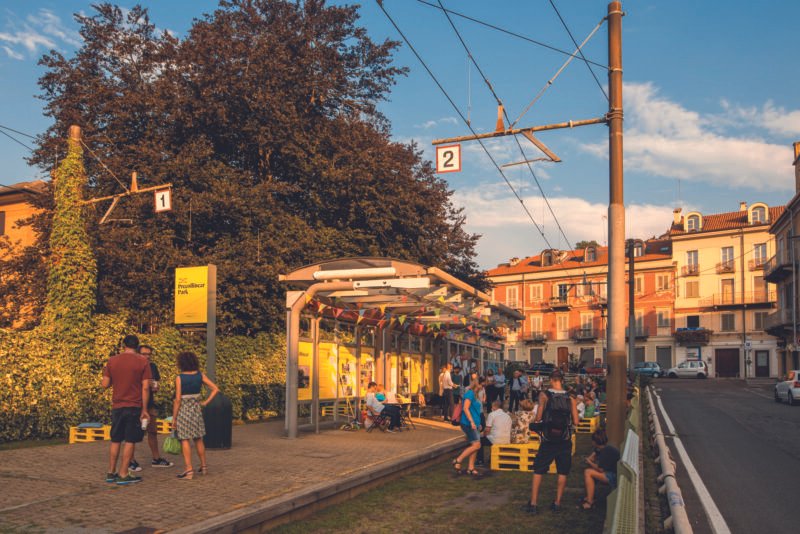Trend 4: Pop-Up Everywhere

Architects have to cope with a severe crisis due to the financial downfall. They have to find other projects to work on and broaden their professional scope. Temporary solutions and pop-up constructions have been built all over the globe. Each and every household product has been used to create little pavilions that often lack a clear functionality or specific idea, for example this temporary construction in Amsterdam made from orange crates, or this bar in Porto that was entirely constructed from IKEA storage boxes. Both pavilions make use of what we call the ‘Quantity Theory of Design’: if your design lacks a big idea, just use large amounts of one element to construct it (for instance IKEA boxes) and it automatically looks impressive. Even campsites went pop-up. A nice example of pop-up urbanism that we found was the Cineroleum, an abandoned petrol station in London that was transformed into a temporary cinema by a collective of young artists, designers and architects. The pop-up trend does not emerge from architecture alone. Local governments also have to find programmatic solutions for their urban wastelands and look for temporary projects and initiatives. This leads to a definite breakthrough of temporary urbanism and architecture and a higher appreciation of the ‘soft city’.
Many brands have been using the pop-up trend as a marketing strategy, almost killing the idea by overloading the cities with loads of pop-up stores. Search for ‘pop-up store’ and you know what we mean. Nevertheless, there is a more fundamental principle supporting the pop-up trend. Groups of consumers are no longer solely bundled in geographical areas, but online as well. Stores do not depend on their traditional circle of clients in a neighborhood, but have the ability to pop up in a city and immediately attract their entire online consumer base to their spot. The future of retail will be in flexibility. To serve a new generation of customers, entrepreneurs have to be keen on finding the right patterns of their clients.

The popularity of pop-up food concepts is growing, whether it is about pop-up restaurants or flexible food sellers. Of course, street vending is not a new phenomenon. Nevertheless, more and more mobile food concepts build their brand by smart use of social media. Facebook, Foursquare and Twitter enable flexible and pop-up initiatives such as the Coolhaus Ice Cream Truck to instantly organize people in a physical way. Kogi Korean BBQ, for instance, is a Korean taco restaurant on wheels that sells its food primarily from two trucks moving from place to place in the Los Angeles metropolis. The people of Kogi make use of Twitter to inform their customers about where to find them, and it is a huge success. The city of L.A. is even unfolding plans to open a mobile food court in the city center where flexible retailers can gather. Another example of a mobile food initiative in Los Angeles is the World Fare Bustaurant, that aims to add “a needed twist to the oversaturated gourmet food truck scene”.
This article belongs to the Top 10 Trends For 2011. Over the last year we have been writing articles about urban culture and innovations in cities on a daily basis. Reflecting on 2010 and looking into 2011 we have put together a list with ten of the most remarkable trends that we spotted. We would like to deepen them out a little in a series of articles published this week on Pop-Up City.



